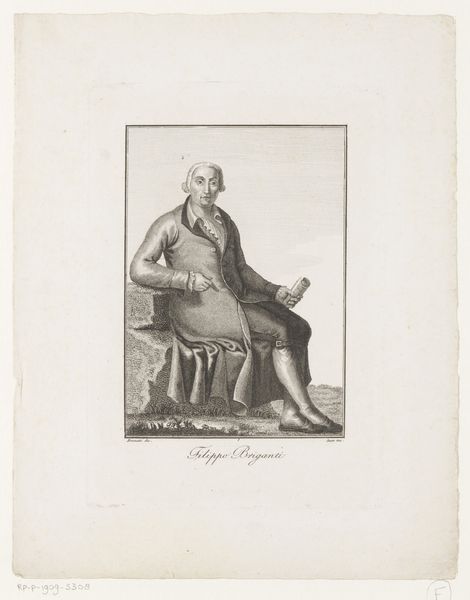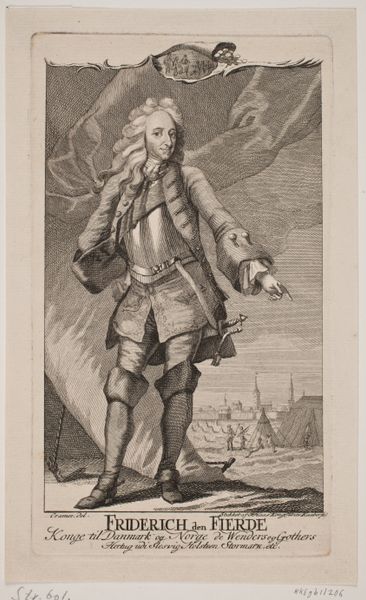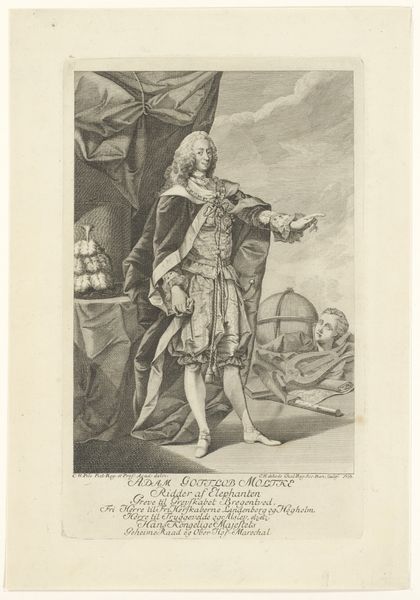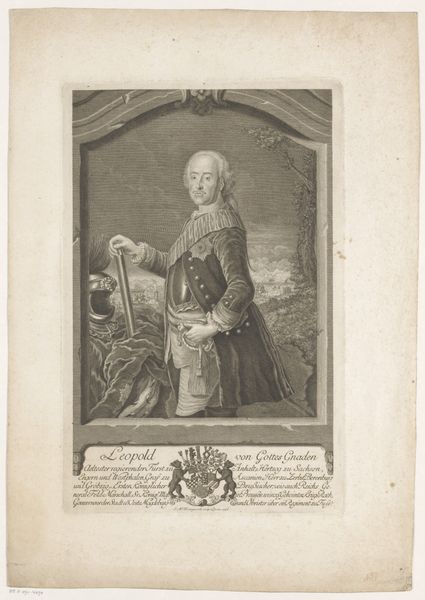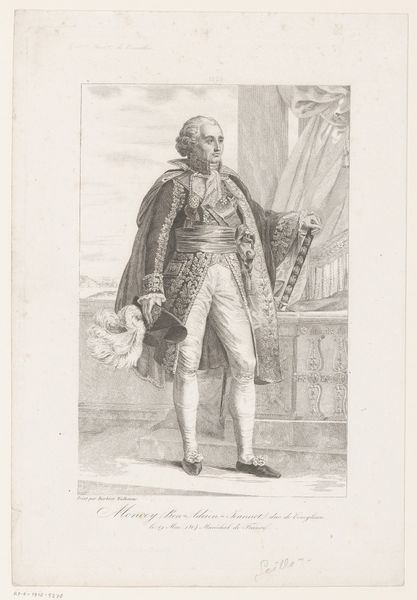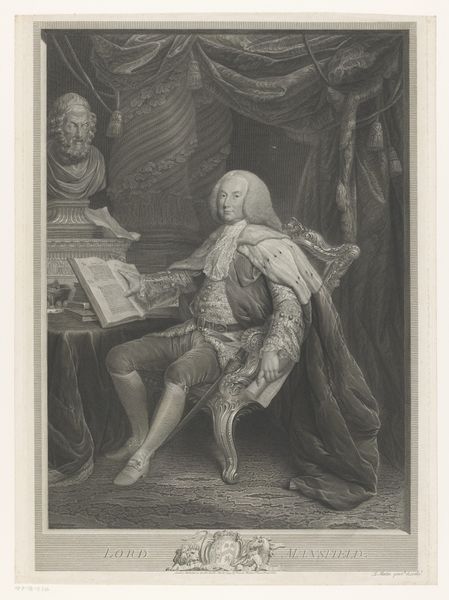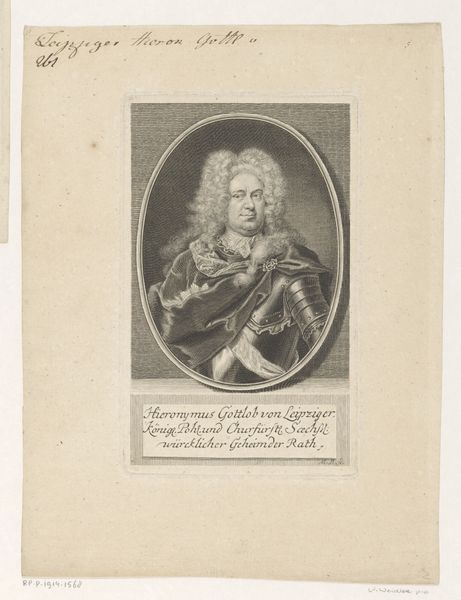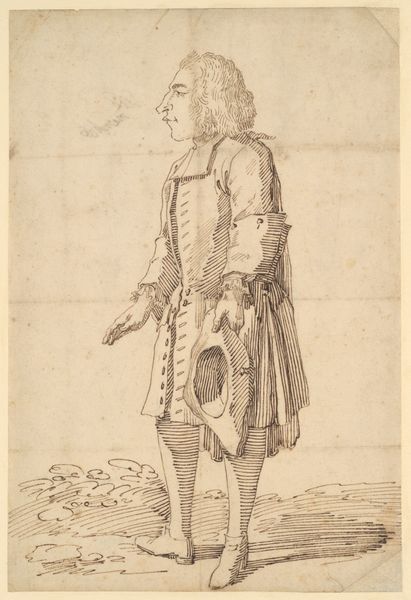
print, engraving
#
portrait
#
aged paper
#
toned paper
#
baroque
#
photo restoration
# print
#
old engraving style
#
history-painting
#
engraving
Dimensions: height 215 mm, width 137 mm
Copyright: Rijks Museum: Open Domain
Jean Colin created this portrait of Stanislaus Leszczyński as an engraving sometime between 1750 and 1770. It offers us a glimpse into the visual strategies of power and representation during the 18th century. Stanislaus Leszczyński, a Polish king and Duke of Lorraine, stands here as a figure of authority, his elaborate attire and dignified posture speaking to his royal status. But what does it mean to portray a king in this way? Colin’s rendering of Leszczyński is not merely a depiction; it is a constructed image meant to project power, legitimacy, and cultural sophistication. Consider the role of fashion in constructing identity. Leszczyński's clothing, the wig, the ornamentation, everything speaks to the visual codes of aristocracy. Colin’s portrait invites us to consider the complex interplay between identity, representation, and the cultural values of the time. How do such images shape our understanding of historical figures, and what do they tell us about the societies that produced them?
Comments
No comments
Be the first to comment and join the conversation on the ultimate creative platform.


